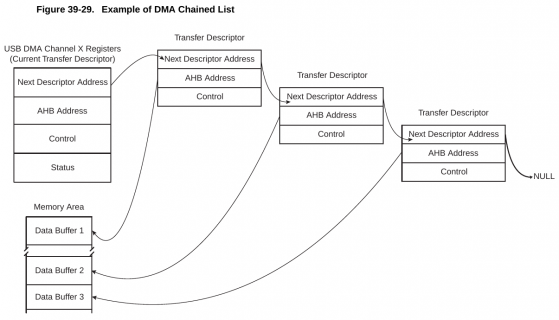Just wondering if it would be possible to port the wonderful "USBHost_t36" Library to Arduino Due with it's SAM3x8E.
The USBOTG unit include in the SAM seems quite similar to the one inside EHCI.
I looked inside this lib's files and it seems to me, that "only" the file "ehci.cpp" had to be completely adapted/rewritten.
(I know that one had to dig deeply in the datasheets of both chips to get that done, of course).
Do you see any chance of that being done, or are there other big obstacles, I do not see?
I am not so experienced in this, but I would give it a try, if you would see good a chance for it.
But better I ask someone with big experience before, to avoid putting big work in a useless matter.
Or would it be better / easier to put the Teensy's "Midi.cpp" on top of the Due's "USBHost.h"?
I would really find it great to have one library for both Teensy and Due.
The Due has one small advantage to the Teensy 3.6 with it's DAC-Unit on board, while for teensy an extra card is necessary for audio-out.
So the Due would fit for MIDI/Audio projects, but there seems to be no really working USBHost-Midi-Library for it yet.
There is just the "USBH_MIDI-Due forked from YuuichiAkagawa's USBH_MIDI for the USB-Host shield, but that is not really comparable to the Teeny's USBHost_t36's Midi-Library.
And the UHS30 is very alpha.
Greetz,
Martin
The USBOTG unit include in the SAM seems quite similar to the one inside EHCI.
I looked inside this lib's files and it seems to me, that "only" the file "ehci.cpp" had to be completely adapted/rewritten.
(I know that one had to dig deeply in the datasheets of both chips to get that done, of course).
Do you see any chance of that being done, or are there other big obstacles, I do not see?
I am not so experienced in this, but I would give it a try, if you would see good a chance for it.
But better I ask someone with big experience before, to avoid putting big work in a useless matter.
Or would it be better / easier to put the Teensy's "Midi.cpp" on top of the Due's "USBHost.h"?
I would really find it great to have one library for both Teensy and Due.
The Due has one small advantage to the Teensy 3.6 with it's DAC-Unit on board, while for teensy an extra card is necessary for audio-out.
So the Due would fit for MIDI/Audio projects, but there seems to be no really working USBHost-Midi-Library for it yet.
There is just the "USBH_MIDI-Due forked from YuuichiAkagawa's USBH_MIDI for the USB-Host shield, but that is not really comparable to the Teeny's USBHost_t36's Midi-Library.
And the UHS30 is very alpha.
Greetz,
Martin


